Have you discovered “Share” and “Looking”? Click to see!


Since its first design by Acorn Computers in Cambridge, UK in 1983, the ARM (Advanced RISC Machine) architecture has become a representative of low-power, high-performance processors, widely used in mobile devices, embedded systems, and the Internet of Things (IoT). The ARM architecture is centered around a reduced instruction set (RISC), efficient execution engines, and modular design, significantly enhancing processor performance and energy efficiency while effectively reducing power consumption. This architecture’s flexible design philosophy supports multi-core technology, low-power optimization, and virtualization technology, enabling chips to efficiently handle parallel tasks and extend device battery life. In chip design, these characteristics of the ARM architecture not only dominate traditional mobile devices but also extend to emerging fields like cloud computing and data centers, providing a solid foundation for high-performance and low-energy applications.
Related Theoretical Foundations
1.1 Overview of ARM Architecture
The ARM architecture is a type of Reduced Instruction Set Computer (RISC) architecture. Since its inception, it has occupied an important position in computer architecture with its features of low power consumption, high performance, and ease of integration. The development of the ARM architecture has evolved from the initial ARMv1 to the current ARMv9, with each generation marking technological advancements and performance improvements, reflecting its rapid response to market demands.(* After ARM9, ARM introduced architectures such as ARM11, further enhancing performance and energy efficiency, and introducing more advanced features such as multimedia instruction sets and better multi-core support.)
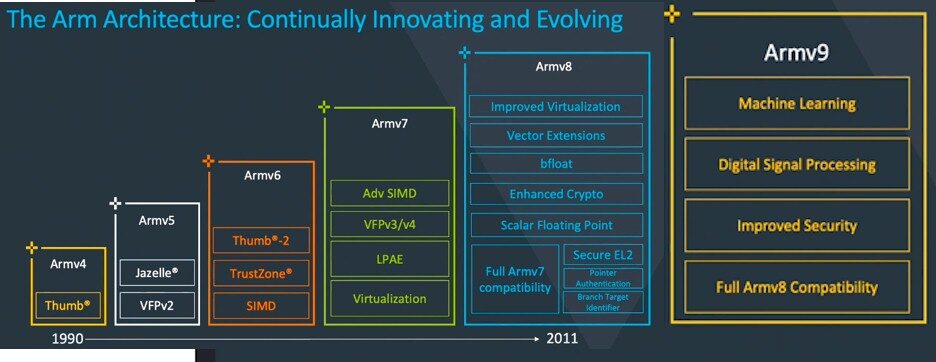
|
|
|
|
|
|
Thumb is a 16-bit instruction set designed to reduce code size and improve memory efficiency.
|
|
|
|
Jazelle technology allows Java bytecode to be executed directly on the CPU, improving the performance of Java applications. Continuing to use Jazelle technology supports the direct execution of Java bytecode.
|
|
|
Vector Floating Point version 2, providing improved floating-point computation capabilities.
|
|
|
|
Thumb-2 is an extension of the Thumb instruction set that supports 32-bit instructions, further enhancing performance and efficiency.
|
|
|
TrustZone technology provides hardware-level security features to protect sensitive data and applications.
|
|
|
Single Instruction Multiple Data (SIMD) instruction set used to enhance performance in multimedia and signal processing applications.
|
|
|
|
Advanced SIMD instruction set that further enhances multimedia and signal processing capabilities.
|
|
|
Vector Floating Point version 3/4, providing more powerful floating-point computation capabilities.
|
|
|
Large Physical Address Extension, supporting larger physical address spaces.
|
|
|
Virtualization technology supports running multiple operating system instances on the same hardware.
|
|
|
|
Enhanced virtualization technology providing stronger virtual machine management and isolation capabilities.
|
|
|
Vector extensions enhance parallel processing capabilities.
|
|
|
Bfloat (Brain Floating Point) is a floating-point format specifically designed for deep learning and machine learning applications.
|
|
|
Enhanced cryptographic features improve security.
|
|
|
Improvements in scalar floating-point operations.
|
|
|
A more secure Exception Level 2 for virtualization and secure operations.
|
|
|
Pointer authentication is a security mechanism designed to prevent pointer hijacking attacks. It ensures the integrity and validity of pointers by signing and verifying them. This mechanism allows the system to detect if pointers have been tampered with, thereby enhancing overall security. Pointer authentication can be used to protect return addresses and data pointers, preventing malicious code from exploiting invalid pointers.
|
|
|
Branch Target Identifier is a mechanism used to enhance the security of branch prediction. It provides a unique identifier for each branch instruction, ensuring its legality during execution, thus reducing the risk of control flow hijacking. This mechanism allows the processor to verify the validity of branch targets, enhancing system security, especially in multi-threaded and asynchronous execution environments.
|
|
|
Fully compatible with the Armv7 architecture.
|
|
|
|
Supports machine learning applications, optimizing the execution of neural networks and other machine learning algorithms.
|
|
Digital Signal Processing
|
Enhanced digital signal processing capabilities suitable for audio, video, and other signal processing applications.
|
|
|
Further improvements in security, including stronger cryptographic and security mechanisms.
|
|
|
Fully compatible with the Armv8 architecture, ensuring backward compatibility.
|
* VFP (Vector Floating Point) is a SIMD (Single Instruction, Multiple Data) technology designed by ARM for its Cortex-A series processors. SIMD technology allows one instruction to operate on multiple data simultaneously, thereby improving processing speed and efficiency in multimedia and signal processing applications.
* NEON stands for “Advanced SIMD,” which is an important component of the ARM architecture designed to improve processor performance by processing data in parallel, especially in multimedia and signal processing tasks. NEON technology allows the processor to perform multiple operations simultaneously, speeding up compute-intensive applications such as image processing, audio processing, video encoding, and decoding.
* TrustZone is a security technology proposed by ARM to provide a secure runtime environment for embedded systems and mobile devices. This technology achieves isolation protection for sensitive data and operations by adding a separate secure world in the chip design, contrasting with the traditional non-secure world.
* Jazelle technology is an extension of the ARM architecture that allows ARM processors to execute Java bytecode directly without first converting it to machine code. This technology aims to improve the efficiency of running Java applications, especially on mobile devices such as smartphones and tablets.
During the development of the ARM architecture, each version update not only enhances overall performance but also optimizes for different application scenarios:
Support for 32-bit systems with ARMv7
ARMv7 is an important milestone in the maturity of the ARM architecture, introducing the Cortex-A, Cortex-R, and Cortex-M processor series, targeting high-performance applications, real-time control, and microcontroller fields, respectively. Models such as Cortex-A8 and A9 have become the main chips for smartphones and tablets, providing powerful processing capabilities for Android and iOS devices. The design characteristics of ARMv7 include performance optimization, low power consumption, and support for more multi-core architectures, further enhancing the device’s multitasking capabilities.
Advantages of 64-bit systems with ARMv8 and beyond
ARMv8 architecture is a significant turning point in ARM’s history, introducing support for 64-bit operations (AArch64) while maintaining compatibility with 32-bit applications (AArch32). This improvement significantly enhances ARM architecture’s performance, enabling more complex computing tasks such as high-performance applications, servers, and data centers. During this period, Apple was the first to adopt the ARMv8-based A7 chip in its iPhone 5s, marking the smartphone industry’s first 64-bit processor and leading the trend of 64-bit transition in mobile devices.
ARMv8 also introduced more virtualization support and security features, such as TrustZone technology, further enhancing device security, allowing it to play a larger role in enterprise applications and IoT devices.
ARMv9: Enhancements in security, AI, machine learning, and more
ARMv9 architecture is the latest processor architecture from ARM, designed to meet the demands of emerging technology fields such as artificial intelligence, machine learning, and security. Compared to ARMv8, ARMv9 further enhances performance and energy efficiency while introducing new security features and AI computing extensions.
One important feature of ARMv9 is the introduction of the “Confidential Compute Architecture” (CCA), which provides higher security when processing sensitive data through hardware-supported data isolation and encryption, which is crucial for modern enterprises and individual users’ data security needs.
*Realm: This is an isolated environment for running middleware and applications, as well as operating systems.
*Non-secure: This is a non-secure area that also runs middleware and applications, as well as operating systems. It communicates with the secure area through the Hypervisor.
*Secure: This is a secure area that runs middleware and applications, as well as operating systems. It communicates with the non-secure area through the Secure Partition Manager.
In AI and machine learning, ARMv9 adds SVE2 (Scalable Vector Extension 2) to enhance the ability to process vectorized data and AI computing tasks. The addition of SVE2 enables ARM processors to operate more efficiently during complex data analysis, image processing, and machine learning inference, further expanding their application prospects in edge computing and data centers.
ARMv9 enhances capabilities in AI and machine learning tasks, enabling it to perform more complex inference and computation tasks on edge devices, which is significant for IoT devices, smart homes, and industrial automation.
After ARM9, ARM introduced the ARM11 architecture, further improving performance and energy efficiency while introducing more advanced features such as multimedia instruction sets and better multi-core support.
1.2 Cortex Processor Series
ARM’s Cortex series is the most widely used family in ARM processor products, divided into three main categories: Cortex-A, Cortex-R, and Cortex-M, each with its characteristics and target applications.
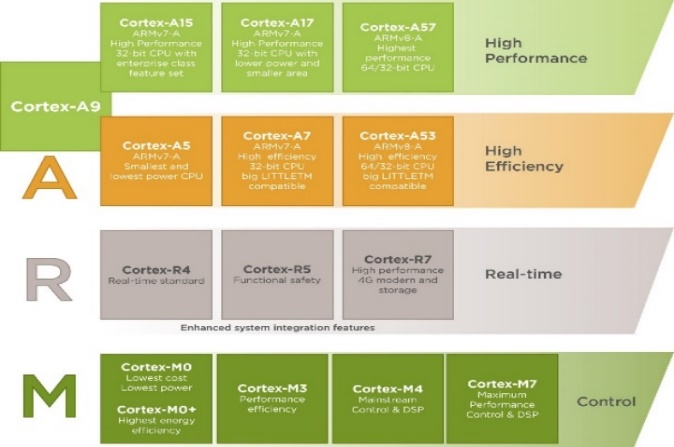
|
|
|
|
|
– Designed for high-performance computing, supports advanced operating systems (such as Android, Linux, Windows).
|
– Widely used in consumer electronics, such as smartphones, tablets, and smart TVs from brands like Samsung, Huawei, and Apple.
|
|
– Features multi-core design, supports big.LITTLE architecture, enabling intelligent switching between high performance and low power consumption.
|
– Suitable for devices requiring high performance, such as laptops.
|
|
|
– Designed for real-time control systems, characterized by high reliability and low latency.
|
– Used in automotive applications for electronic control units (ECUs), autonomous driving systems, and advanced driver assistance systems (ADAS).
|
|
– Supports real-time operating systems (RTOS), capable of quickly responding to and handling critical tasks.
|
– Used in medical devices, such as pacemakers, ensuring high reliability.
|
|
|
– Targeted at microcontroller applications, characterized by ultra-low power consumption, ease of use, and high integration.
|
– Suitable for battery-powered devices, such as smartwatches, thermostats, smart bulbs, and other smart home products.
|
|
– Suitable for IoT devices, home appliances, smart homes, and wearable devices.
|
– Excels in industrial automation, smart agriculture, and other IoT applications.
|
1.3 Other ARM Processor Designs
In addition to the traditional Cortex series processors, ARM has also launched dedicated architectures for high-performance computing and data centers, meeting the demands of emerging fields such as cloud computing, big data, and edge computing.
Neoverse Architecture: Data Centers and High-Performance Computing
-
Neoverse is an architecture designed by ARM specifically for data centers and high-performance computing (HPC), focusing on enhancing multi-core computing capabilities, energy efficiency, and system bandwidth. Unlike the traditional Cortex series, it targets server-level computing environments, aiming to provide higher parallel processing capabilities and stronger computing performance.
-
Application Scenarios: The Neoverse architecture is widely used in cloud servers, data centers, network infrastructure, and edge computing devices. As the ARM ecosystem continues to grow, more cloud service providers (such as Amazon AWS’s Graviton processors) are adopting ARM architecture for efficient computing and large-scale data processing. The multi-core parallelism and high energy efficiency design of Neoverse processors make them excel in handling AI, machine learning, data analysis, and scientific computing tasks.
1.4 ARM’s Licensing Model
The success of the ARM architecture is also attributed to its open licensing model, attracting a large number of chip manufacturers to participate. Domestic companies such as Huawei and Unisoc have developed multiple processor products with independent intellectual property rights based on the ARM architecture, widely used in smartphones, tablets, and IoT fields, further promoting the popularity and development of ARM architecture. For example, Huawei’s Kirin series processors have performed excellently in multiple performance tests, gaining widespread recognition from the market and consumers. Through deep customization and optimization, they have successfully entered the high-end chip ranks, becoming representatives of domestic high-end chips, demonstrating the strong adaptability and competitiveness of the ARM architecture in the mobile device field.
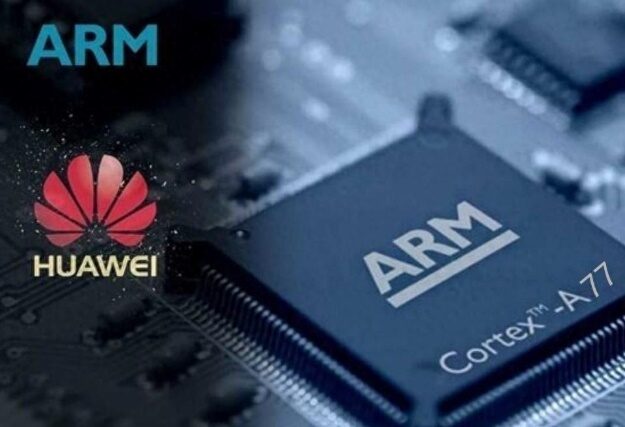 Meanwhile, the research and application of ARM architecture abroad are also thriving. As the creator and core intellectual property holder of the ARM architecture, ARM Holdings continues to promote technological innovation and market expansion of the architecture. Internationally renowned chip manufacturers such as Qualcomm, Samsung, and Apple have developed multiple high-performance processors based on ARM architecture, which enjoy a high reputation and market share globally. Especially in the fields of smartphones and tablets, ARM architecture has become a dominant force, ensuring that ARM-based devices occupy an important position in the mobile computing market with outstanding performance and energy efficiency. In addition, the ARM architecture is gradually entering the laptop market, presenting a strong challenge to the traditional x86 architecture, bringing more efficient power management and mobility experience.
Meanwhile, the research and application of ARM architecture abroad are also thriving. As the creator and core intellectual property holder of the ARM architecture, ARM Holdings continues to promote technological innovation and market expansion of the architecture. Internationally renowned chip manufacturers such as Qualcomm, Samsung, and Apple have developed multiple high-performance processors based on ARM architecture, which enjoy a high reputation and market share globally. Especially in the fields of smartphones and tablets, ARM architecture has become a dominant force, ensuring that ARM-based devices occupy an important position in the mobile computing market with outstanding performance and energy efficiency. In addition, the ARM architecture is gradually entering the laptop market, presenting a strong challenge to the traditional x86 architecture, bringing more efficient power management and mobility experience.
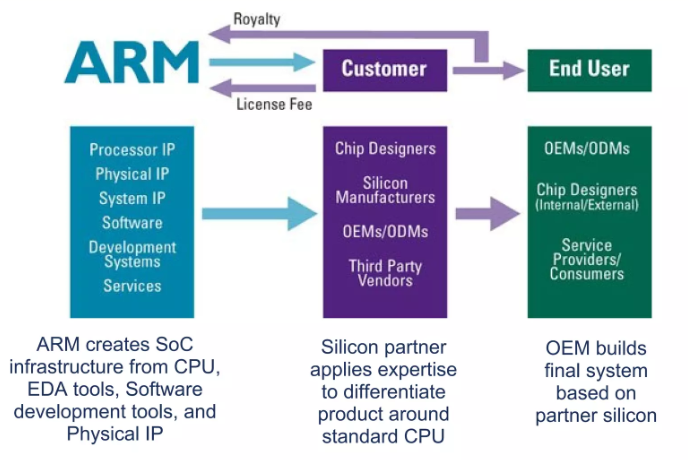
|
|
|
Relations/Responsibilities
|
|
|
Creates SoC infrastructure, including CPU, EDA tools, software development tools, physical IP, etc.
|
Provides technology licensing and services, collecting licensing fees and usage fees.
|
|
|
Companies or organizations purchasing ARM technology.
|
Utilizes ARM technology for product design and manufacturing.
|
|
|
Companies or teams designing silicon chips, which may be internal teams or external suppliers.
|
Uses ARM’s technology and IP to design differentiated products.
|
|
|
Consumers and service providers using products manufactured by OEMs/ODMs.
|
Final consumers of the products, not directly transacting with ARM Holdings.
|
|
|
Original Equipment Manufacturers (OEM) and Original Design Manufacturers (ODM).
|
Use silicon chips provided by chip designers to build system integration solutions and manufacture final products.
|
|
|
One-time fee paid when purchasing the rights to use ARM technology.
|
One of ARM Holdings’ main sources of revenue.
|
|
|
Ongoing fees calculated based on sales volume or other metrics.
|
One of ARM Holdings’ main sources of revenue, usually proportional to product sales volume.
|
Both domestically and internationally, the research and application of ARM architecture show strong development momentum. With the continuous evolution of technology and market expansion, the ARM architecture will further play an important role in the future, promoting the continuous innovation and progress of global computer technology. Especially in emerging fields such as artificial intelligence, the Internet of Things, and cloud computing, the ARM architecture will provide more possibilities for building low-power, high-performance computing platforms, assisting in the upgrade and development of the global information technology industry.
The ARM instruction set, as the core of the ARM architecture, embodies the concept of simplicity and efficiency in its design. It is mainly divided into two categories: ARM instructions and Thumb instructions, targeting different application scenarios and performance requirements.
-
ARM Instructions: ARM instructions use a length of 32 bits, allowing each instruction to carry more operational information and addressing modes, supporting more complex operations. This type of instruction performs excellently in high-performance computing tasks and meets the needs of complex algorithms and data processing. Its rich instruction functionality and flexible addressing modes provide powerful computing capabilities for high-performance processors. Additionally, the ARM instruction set can quickly and efficiently process data during execution, suitable for applications requiring high throughput, such as multimedia processing and image computation.
-
Thumb Instructions: Thumb instructions are 16 bits in length, designed to reduce power consumption and improve code density while maintaining certain performance levels. Compared to ARM instructions, the compactness of the Thumb instruction set means that code occupies less storage space, which is particularly important in memory-limited embedded systems. It is especially suitable for devices with strict cost and power consumption requirements, such as IoT terminals, wearable devices, and low-power sensors. By reducing the length of each instruction, the Thumb instruction set achieves higher energy efficiency, meeting the needs of portable devices for low power consumption and compact design.
|
|
|
|
|
|
32-bit instruction set, each instruction 32 bits
|
16-bit instruction set, each instruction 16 bits
|
|
Data Address Instructions
|
Can simultaneously process three operands in data address instructions
|
Can only simultaneously process two operands in data address instructions
|
|
Number of General-Purpose Registers
|
Has 16 general-purpose registers (R0-R15)
|
Only has 8 general-purpose registers (R0-R7), with some instructions accessing additional registers
|
|
Binary Encoding Regularity
|
Binary encoding is more standardized, facilitating the implementation of compilers and optimizers
|
Encoding is simpler, but due to instruction length limitations, it may not be as standardized as the ARM instruction set
|
|
|
Complete instruction set of ARM
|
A subset of the ARM instruction set
|
|
|
Instructions are longer, code density is lower
|
Instructions are shorter, code density is higher, saving storage space
|
|
Performance/Power Efficiency
|
Provides more functionality and flexibility, but may consume more power
|
Improves code efficiency and reduces power consumption by shortening instruction length, suitable for systems with high power consumption requirements
|
The ARM instruction set, with its simplicity and efficiency, has become a model for computer instruction set design. In high-performance computing and low-power application scenarios, the ARM instruction set can provide suitable solutions. By continuously adapting to technological development trends, optimizing architectural performance, and expanding new features, the ARM instruction set has not only achieved technological innovation but also captured market demand, promoting the widespread application and continuous development of the ARM architecture globally.
1.6 ARM Processor Structure
The core structure of ARM processors is the basis for achieving high performance and low power consumption, mainly including key modules such as the processor core, cache system, and bus interface. These components work closely together to ensure efficient execution of instructions and fast processing of data. The following is a schematic diagram of a typical ARM architecture processor chip’s internal structure, with the functions of each module as follows:
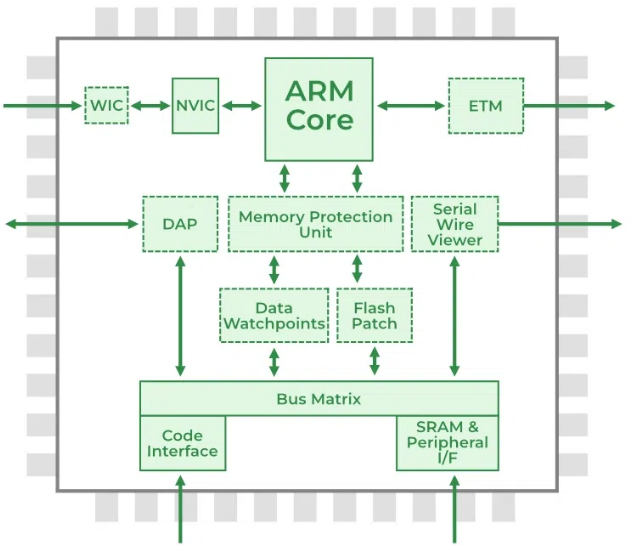
|
|
|
|
|
|
|
The core part responsible for executing instructions and processing data. The RISC design features of the ARM architecture enable it to efficiently handle tasks, supporting low power consumption and high-performance computing.
|
|
|
Nested Vector Interrupt Controller
|
Used for interrupt management and priority control, efficiently handling various interrupts, improving system response speed, allowing multiple interrupt sources to be processed in a nested manner, and providing fast service for high-priority interrupts.
|
|
|
Wakeup Interrupt Controller
|
Mainly used in low-power modes to wake up the processor through external interrupt signals, helping devices save energy. This is crucial for extending the battery life of devices (such as IoT and smart wearable devices).
|
|
|
|
Used for real-time debugging and monitoring of processor operating states, helping developers analyze program execution status; it is a powerful debugging tool that allows quick identification and resolution of issues during the development phase.
|
|
|
|
Provides an interface between external debugging tools and the processor, allowing developers to directly access internal resources for debugging and programming, facilitating development and problem resolution.
|
|
Memory Protection Unit (MPU)
|
|
Used to prevent illegal access to memory, thereby enhancing system security and stability. By setting different memory areas and access permissions, it ensures program and data security, avoiding unauthorized memory operations.
|
|
|
|
Provides a low-overhead real-time data tracing and output function, allowing monitoring of the processor’s internal state, helping developers view the program execution process in real-time, aiding debugging and performance optimization.
|
|
Data Watchpoints & Flash Patch
|
Data Watchpoints and Flash Patch
|
Data watchpoints: Used to trigger interrupts on specific data accesses, aiding debugging of specific data operations. Flash patch: Allows code replacement and modification during the debugging phase without recompiling the entire program.
|
|
|
|
Provides data transmission paths between various modules within the chip, enabling efficient communication between the processor, memory, and peripherals. The design of the bus matrix determines the overall data processing efficiency of the system and affects performance.
|
|
|
|
Used to interact with external memory (such as Flash) that stores code. The ARM processor loads instructions from the external memory through this interface during runtime, ensuring stability and speed of instruction retrieval.
|
|
|
SRAM and Peripheral Interface
|
Provides an interface with on-chip SRAM (Static Random Access Memory) and external devices, supporting data storage and peripheral control. For example, it can connect various external devices such as sensors, displays, etc., enhancing the system’s functional extensibility.
|
The overall working principle of the ARM architecture is to ensure that the processor efficiently executes tasks, responds to interrupts, and maintains system security through the collaborative work of multiple components and modules:
-
During operation, the ARM Core loads instructions from external memory (via the Code Interface) and communicates data through the Bus Matrix and various modules.
-
NVIC and WIC ensure that the system can respond to external events and efficiently handle interrupts.
-
Debugging modules such as DAP and ETM provide developers with powerful debugging tools, facilitating program optimization and issue troubleshooting.
-
Memory protection and virtualization technologies (such as MPU and TrustZone) safeguard system security and data integrity.
|
|
|
|
1. Instruction Loading and Execution
|
|
|
The ARM processor core is responsible for executing instructions loaded into memory. It loads instructions from external memory through the Code Interface (such as Flash or RAM), and after instruction parsing, they enter the processor for execution.
|
|
|
A interconnection structure that connects the processor core, memory, and external devices, responsible for data exchange, ensuring efficient transmission of instructions and data between modules, supporting parallel access by multiple masters and slaves, enhancing overall system bandwidth and response speed.
|
|
|
|
NVIC(Nested Vectored Interrupt Controller)
|
The interrupt controller in the ARM architecture manages all interrupt requests in the system, supporting nested interrupts, allowing high-priority interrupts to interrupt the processing of low-priority interrupts, ensuring timely responses to important tasks.
|
|
WIC(Wakeup Interrupt Controller)
|
Monitors external events in low-power modes, capable of detecting events and waking up the system while it is in sleep mode, optimizing energy consumption while ensuring timely responses to external requests.
|
|
3. Debugging and Optimization
|
|
|
ARM’s debugging interface provides interaction capabilities with the internal state of the processor, allowing developers to access memory, registers, and execute specific instructions through DAP, facilitating debugging and performance analysis.
|
|
ETM(Embedded Trace Macrocell)
|
Used for real-time tracking of processor execution, recording the execution flow and data flow of the processor, helping developers understand program execution status, aiding optimization and issue troubleshooting.
|
|
4. Security and Data Integrity
|
|
MPU(Memory Protection Unit)
|
Implements memory protection to ensure that different tasks or processes do not interfere with each other when accessing memory, protecting critical data and code by partitioning memory areas and setting access permissions, enhancing system security.
|
|
|
Hardware isolation technology that provides the concept of secure and non-secure worlds, allowing secure and non-secure operations to run on the same processor, protecting sensitive data (such as encryption keys) from attacks, achieving data integrity and privacy through a secure execution environment.
|
The structural design of ARM processors has always focused on high performance, low power consumption, and ease of integration. By continuously optimizing core structures, enhancing cache system performance, and improving bus interface designs, it adapts to different application needs. In mobile devices, embedded systems, and IoT devices, ARM processors have become the mainstream choice due to their excellent energy efficiency, flexible architectural design, and scalability. For example, the introduction of the Big.LITTLE architecture combines high-performance cores with low-power cores to achieve a dynamic balance between performance and energy consumption, widely applied in smartphones and embedded devices.
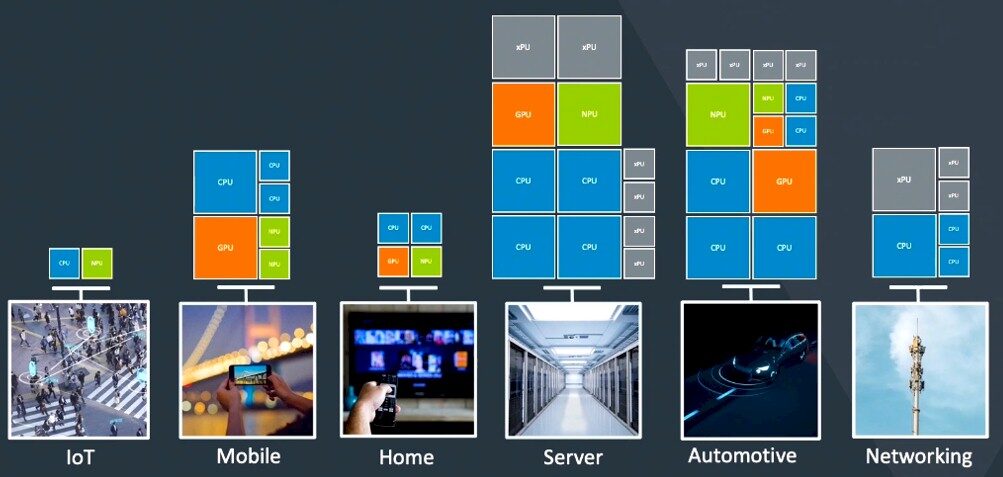 As technology continues to advance and market demands diversify, the structural design of ARM processors will continue to innovate and develop. For instance, with the proliferation of artificial intelligence (AI) applications, future ARM processors will increasingly integrate dedicated AI accelerators to enable real-time AI inference on edge devices. Moreover, the surge in 5G technology and IoT devices will prompt ARM architecture to further optimize its low power consumption characteristics to support efficient communication for a massive number of connected devices. Through continuous evolution, ARM processors will inject more vitality into the future computing field, providing innovative computing solutions for more application scenarios.
1.7 Key Technologies in ARM Architecture
Key technologies in the ARM architecture encompass multi-core technology, low-power design, and virtualization technology, which work synergistically to form the core competitiveness of the ARM architecture, allowing it to excel in diverse application scenarios.
Multi-core technology is particularly important in the ARM architecture. By integrating multiple cores within a single processor, it achieves a significant enhancement in parallel processing capabilities. This design not only supports simultaneous processing of multiple tasks but also improves the processing efficiency of individual tasks through task partitioning and parallel execution. Especially in complex computing tasks and multi-task operations, multi-core technology enables ARM processors to respond efficiently, improving overall performance and user experience. With the growth of demand for big data processing, image processing, and other applications, multi-core technology has become a key means for the ARM architecture to tackle complex computing challenges.
The low-power design of the ARM architecture is the foundation for its success in the mobile device market. To meet the battery life demands of portable devices, ARM significantly reduces processor power consumption through careful circuit optimization, dynamic voltage and frequency scaling (DVFS), and other technologies. Without sacrificing performance, ARM processors can operate at lower energy consumption, thereby extending device usage time. This low-power feature not only excels in smartphones and tablets but is also widely applied in IoT and wearable devices, supporting all-day operation of devices.
As technology continues to advance and market demands diversify, the structural design of ARM processors will continue to innovate and develop. For instance, with the proliferation of artificial intelligence (AI) applications, future ARM processors will increasingly integrate dedicated AI accelerators to enable real-time AI inference on edge devices. Moreover, the surge in 5G technology and IoT devices will prompt ARM architecture to further optimize its low power consumption characteristics to support efficient communication for a massive number of connected devices. Through continuous evolution, ARM processors will inject more vitality into the future computing field, providing innovative computing solutions for more application scenarios.
1.7 Key Technologies in ARM Architecture
Key technologies in the ARM architecture encompass multi-core technology, low-power design, and virtualization technology, which work synergistically to form the core competitiveness of the ARM architecture, allowing it to excel in diverse application scenarios.
Multi-core technology is particularly important in the ARM architecture. By integrating multiple cores within a single processor, it achieves a significant enhancement in parallel processing capabilities. This design not only supports simultaneous processing of multiple tasks but also improves the processing efficiency of individual tasks through task partitioning and parallel execution. Especially in complex computing tasks and multi-task operations, multi-core technology enables ARM processors to respond efficiently, improving overall performance and user experience. With the growth of demand for big data processing, image processing, and other applications, multi-core technology has become a key means for the ARM architecture to tackle complex computing challenges.
The low-power design of the ARM architecture is the foundation for its success in the mobile device market. To meet the battery life demands of portable devices, ARM significantly reduces processor power consumption through careful circuit optimization, dynamic voltage and frequency scaling (DVFS), and other technologies. Without sacrificing performance, ARM processors can operate at lower energy consumption, thereby extending device usage time. This low-power feature not only excels in smartphones and tablets but is also widely applied in IoT and wearable devices, supporting all-day operation of devices.
|
|
|
|
|
|
|
ARM processors can dynamically adjust power consumption based on different workloads, such as automatically entering sleep mode during idle or light-load states, reducing operating frequency, thereby significantly lowering power consumption.
|
|
|
Utilizes advanced power gating technology to precisely control the power supply status of each module, shutting down unnecessary functional units to reduce overall power consumption.
|
|
|
Designs various energy-saving modes (such as deep sleep and light sleep) that switch based on real-time load demands, maintaining low-energy operation.
|
|
2. High-Performance Processing
|
Optimized Processor Core Design
|
Enhances instruction execution efficiency through techniques such as superscalar and out-of-order execution, achieving parallel processing of multiple instructions.
|
|
High-Speed Cache Mechanism
|
Introduces multi-level caches (L1, L2, L3) to reduce data read/write latency, storing frequently used data and instructions, improving data access speed.
|
|
Memory Access Optimization
|
Optimizes memory access through low-latency memory interfaces and prefetching techniques, enhancing data processing capabilities and response speeds.
|
|
3. Other Technological Aspects
|
|
Utilizes electronic design automation (EDA) tools for automated design, optimizing the physical layout and routing of chips to meet performance, power consumption, and signal integrity requirements.
|
|
|
Employs rigorous testing processes and simulation verification methods to ensure the correctness of chip functions and the stability of performance, promptly identifying and fixing potential defects.
|
Virtualization Technology
With the rapid development of cloud computing and data centers, virtualization technology has become an indispensable part of the ARM architecture. ARM supports hardware-level virtualization, allowing multiple operating systems and virtual machines to run independently on the same physical processor, achieving flexible resource scheduling and efficient utilization. Through virtualization technology, enterprises can enhance overall resource utilization while reducing the number of physical servers, thereby lowering costs. The application of this technology has broadened the use of ARM processors in high-performance fields such as data centers and cloud computing, providing users with flexible and efficient computing solutions.
Scalability and Compatibility
The design of the ARM architecture in terms of scalability and compatibility is also noteworthy. Whether targeting high-performance server needs or low-power embedded devices, the ARM architecture can adapt to different application scenarios through modular design. This scalability allows developers to configure the number of processor cores, frequency, and functionalities based on specific needs while ensuring compatibility with existing software and hardware. ARM’s open licensing model further promotes the expansion of its ecosystem, attracting major chip manufacturers to participate in innovation, leading to widespread application of ARM architecture across multiple industry sectors.
The ARM architecture, with its key technologies such as multi-core technology, low-power design, and virtualization technology, builds a powerful computing platform. Multi-core technology enhances parallel processing capabilities, low-power design meets the demands of mobile devices, and virtualization technology supports the development of data centers and cloud computing. These technological advantages, combined with high scalability and compatibility, keep the ARM architecture at the forefront in a constantly changing market. With the continuous evolution of technology, ARM will unleash its potential in more fields, injecting new vitality into the development of computer science and technology.
1.8 Common Operating Systems on ARM
The common operating systems on the ARM architecture are diverse, covering from open-source platforms to proprietary systems, providing a variety of software ecosystem support for ARM-based devices. The following are some typical operating systems and their characteristics and application advantages on the ARM architecture.
|
|
|
|
|
|
As the world’s most popular open-source operating system, Linux shows high adaptability and wide application on the ARM architecture. Its openness and customizability allow it to be flexibly tailored and optimized for specific device needs, suitable for smartphones, tablets, embedded systems, IoT devices, and servers.
|
– Open-source features have driven the development of a large open-source software ecosystem.
|
|
– Flexible tailoring and optimization to meet different device needs.
|
|
|
|
|
Windows RT, launched by Microsoft, is specifically optimized for the ARM architecture, inheriting the user interface and application ecosystem of the Windows series. The design goal is to provide a smooth and stable operating experience for tablets and lightweight laptops. By optimizing processor scheduling, memory management, and power management, Windows RT achieves a high energy efficiency ratio on ARM devices, resulting in longer battery life and more efficient performance.
|
– Optimized for ARM, providing a smooth user experience.
|
|
– Higher energy efficiency and battery life.
|
|
– Closed nature enhances system security and stability.
|
|
|
Android is currently one of the most widely used operating systems in the smartphone and tablet market, particularly optimized for the ARM architecture. Based on the Linux kernel, it has open-source features that allow developers to create diverse applications and services. The prevalence of ARM architecture in mobile devices has led to Android optimizing its operating mechanisms, including processor scheduling, memory management, and power optimization, to achieve excellent performance and battery life.
|
– A rich application ecosystem supporting diverse device configurations.
|
|
– Optimized operating mechanisms enhance performance and battery life.
|
|
– Open-source features promote application development.
|
|
|
Apple’s iOS system is a representative of the ARM architecture in mobile devices. iOS is highly optimized for Apple’s self-developed ARM architecture chips (such as A-series processors) to achieve outstanding performance and extremely low power consumption. The integrated design of software and hardware allows iOS devices to have a smooth operating experience, strong graphics processing capabilities, and long battery life. Although iOS is a closed system, Apple provides high-quality development tools (such as Xcode) to support developers.
|
– Highly optimized performance and low power consumption.
|
|
– Integrated design of software and hardware provides a smooth experience.
|
|
– Strict development specifications and quality tools ensure the stability and consistency of applications.
|
Overall, the common operating systems on ARM architecture each have their unique characteristics, forming a rich and diverse software ecosystem. The openness of Linux, the optimized energy efficiency of Windows RT, the wide adaptability of Android, and the collaborative design of hardware and software in iOS collectively promote the rapid development of ARM architecture in mobile devices, embedded systems, and other emerging technology fields. With the continuous advancement of ARM architecture, these operating systems will see broader applications and innovations in more scenarios in the future.
-
Huawei’s self-developed CPU has encountered the best timing, netizens: God is helping Huawei—Weike Number
-
Quick Look At Windows 10 On ARM – MDM Tech Space
-
What is SVE2, which was重点引入 in Armv9?_Photo
-
Introducing the Confidential Compute Architecture – Arm Announces Armv9 Architecture: SVE2, Security, and the Next Decade
-
An Introduction To ARMv9 & Its Key Features Trustonic
-
Ppt | PPT | Free Download
-
ARM processor Introduction
-
The ARM Processors: A, R, and M Categories and Their Specifics – Sirin Software
-
Arm Clashes With Intel and AMD With N2 Server CPU Core | Electronic Design
Report Sharing:
1、China’s Smart Car Onboard Computing Chip Industry Report
2、2024 China Automotive Intelligent Chassis Industry Technology Trend Research Report
3、Before the explosion of Tesla FSD, the domestic intelligent driving industry accelerated development
4、China First Automobile—The Application and Thinking of Artificial Intelligence in Autonomous Driving Decision Making
5、Series Reports | Huawei’s Intelligent Driving Solutions Simplified
6、From Tesla’s Perspective, Looking at the Development of Intelligent Driving
7、Huawei’s Autonomous Driving Technology Deep Analysis Report


Follow the public account, reply in the background“Data” to get the PDF electronic version; or add WeChat luo18021032958 (note company and name)
Scan to register for the conference
Scan to follow
Get more industry information

Welcome to join the Intelligent Vehicle Technology Communication Group
Follow the public account and reply to the keyword “Community”
to get the access method
【Disclaimer】The article represents the author’s independent views and does not reflect the position of EVH1000 Intelligent Vehicles. If there are issues regarding the content or copyright of the work, please contact EVH1000 Intelligent Vehicles for deletion or negotiation of copyright usage within 30 days of publication.
 Click“Read the full text”, to register for the annual meeting
Click“Read the full text”, to register for the annual meeting
Scan to follow
Get more industry information

Welcome to join the Intelligent Vehicle Technology Communication Group
Follow the public account and reply to the keyword “Community”
to get the access method
【Disclaimer】The article represents the author’s independent views and does not reflect the position of EVH1000 Intelligent Vehicles. If there are issues regarding the content or copyright of the work, please contact EVH1000 Intelligent Vehicles for deletion or negotiation of copyright usage within 30 days of publication.
 Click“Read the full text”, to register for the annual meeting
Click“Read the full text”, to register for the annual meeting





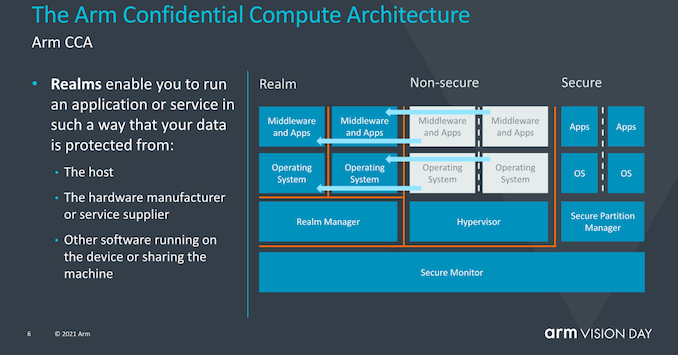
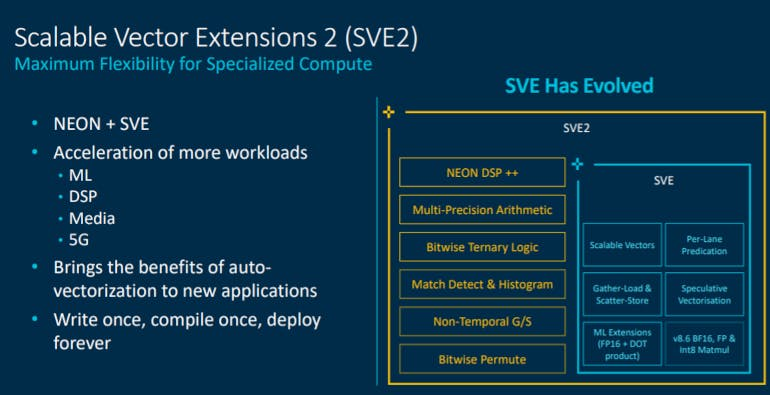

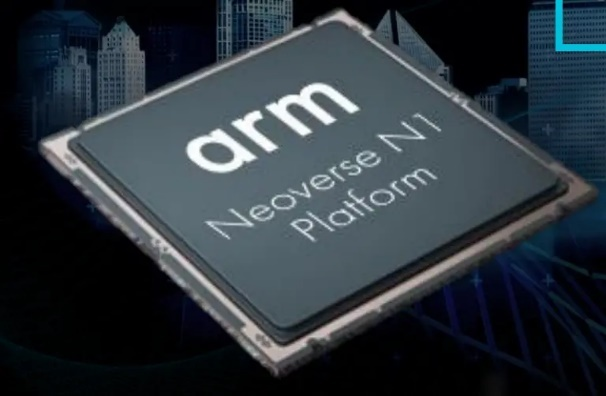











 Click“Read the full text”, to register for the annual meeting
Click“Read the full text”, to register for the annual meeting

 Click“Read the full text”, to register for the annual meeting
Click“Read the full text”, to register for the annual meeting